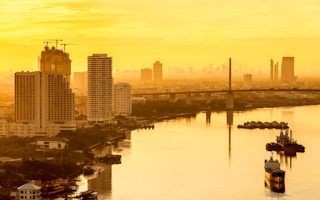The future is slightly obscured. The outlook is less than clear. For once, such phrases are not metaphorical.
A world of global warming could mean a growing haze of solid and liquid aerosols – tiny specks of salt, fine dust, sulphates, black carbon and other particles in the atmosphere, according to new research.
Robert Allen, an earth scientist at the University of California, Riverside and colleagues report in Nature Climate Change that as the planet warms because of greater concentrations of carbon dioxide and other greenhouse gases in the atmosphere, driven by ever greater human burning of fossil fuels, so too the air could become more murky.
Aerosols happen naturally and because of human activity. They are exquisitely small blobs of liquid or solid afloat in the atmosphere, the product of dust storms, plant pollen, wildfires, kitchen fires, smoke from factory chimneys and vehicle exhausts, volatile discharges from forests and so on. They may make humans cough or choke, and they exact a long-term toll on human health, but they also affect the climate.
Increase inevitable
These aerosols both scatter sunlight and absorb it, and climate scientists who try to model the future must also calculate the impact of aerosols on global warming: will these reflect or screen out solar radiation to slow down the process, or accelerate it?
Dr Allen and his colleagues turned the question around: what will increasing average levels of planetary temperature do for aerosols? The latest and most up-to-date climate computer simulations delivered the answer. Warmer means more haze.
“Our work on the models shows that nearly all aerosol species will increase under greenhouse gas-induced climate change,” Dr Allen said. “This includes natural aerosols like dust and sea salt, and also anthropogenic aerosols like sulphate, black carbon and primary organic matter. Stricter reductions in natural emissions will be necessary for attaining a desired level of air quality throughout the 21st century.”
Consistent result
Research like this poses a series of complex questions: what will global warming and climate change do for air circulation, and therefore winds? Will there be more clouds, and if so, more rainfall? And will that reduce air pollution? Or will a warmer world stir up the waves, and set the winds swirling ever more powerfully through the desert soils, and blow the soot of the cities over the forests and farmland?
Although the scientists used a range of models and different climate predictions to test a series of hypothetical futures, the outcome was consistent. The research showed that greenhouse gas warming means overall more rain and snow, which means more aerosols are rinsed out of the air. But that is on average. Some places will become ever more parched, and the rains, when they come, will be less frequent.
“These latter two changes,” says Dr Allen, “which would be expected to increase the burden of atmospheric aerosols, outweigh the former change. The result is more aerosols in the atmosphere.”










